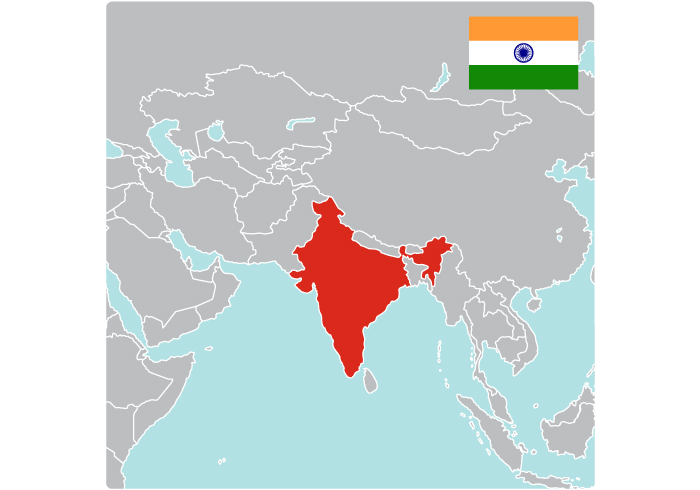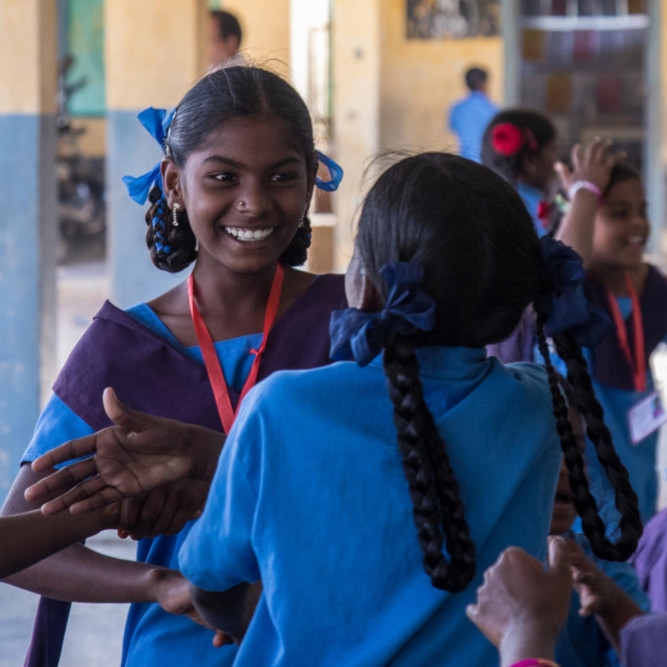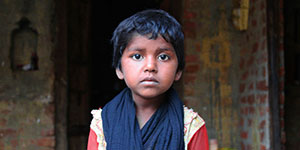Help Children in India
Home to some of the most ancient surviving civilizations, today’s India is the world’s largest democracy and a rising economic powerhouse. But it is tackling major social, economic and environmental issues, including a huge gap between the wealthy and those living in poverty.
While there is more wealth in India than ever before, and significant progress has been made, it hasn’t fully translated into health care and nutrition, education or better protection for all, especially India’s most marginalized and deprived children.
Challenges for Children in India
While India surges ahead as a driving force in the world economy, tens of millions of children are being left behind. Children from the most vulnerable communities, including those from the lowest castes and tribes, from religious minority groups and girls, don’t have an equal chance to succeed. Too many children are stunted due to severe malnutrition. Child marriage, child labor and poverty are persistent challenges.
-
1 child in 27 dies before their 5th birthday, 5 times the U.S. rate
-
35% of children suffer from stunting due to malnutrition
-
20% of children are out of school, with 28% engaged in child labor
-
16% of girls (ages 15-19) are married, and 34% of girls (ages 15+) struggle to read and write
-
22% of people live in poverty

Our Results for Children in India
Thanks to giving people like you, our work for children in India is making a difference – including for the over 742,000 children in India we reached last year. This includes helping greatly reduce child mortality and stunting, as well as child labor, child marriage and teen births. Together, we’re changing children’s lives – and the future we share.

Your support is making it possible for girls like 13-year-old Sandhya to not only avoid child marriage and go back to school, but become impassioned advocates for girls’ empowerment.
-
85,000 children healthy and nourished
-
211,000 children educated and empowered
-
361,000 children protected from harm
-
86,000 children lifted from poverty
-
88,000 children aided in crisis
Our Work for Children in India
A leading charity for children in India, Save the Children believes every child, regardless of their origin, deserves the best chance for a bright future, and we’re fiercely committed to ensuring children’s rights are realized, their voices are heard and their needs are given top priority.
For over 50 years, we’ve worked relentlessly throughout India to secure children’s survival and better health, their access to education, their protection from harm and their rights to development and participation.
We provide robust health and nutrition benefits to children from the most marginalized and disadvantaged communities – in fact, health and nutrition work comprises nearly half of our programming in India today. We help India’s children start and stay in school. When children are forced into child labor, are abused or trafficked, we work to protect them and keep them free from violence.
In disaster-prone India, our trained teams mobilize when children and their families are affected by storms, floods and other catastrophic events, providing the support they need to quickly recover and re-establish their lives, dignity and livelihoods.
When Cyclone Fani made landfall in 2019, it was one of the strongest cyclones to batter India in decades, causing widespread damage in some of India’s poorest and most remote communities in Odisha State. Save the Children responded with prepositioned supplies and rapid relief, as well as a long-term recovery and resilience-building.
Here are some recent examples of our work:
A healthy start in life
- We’re reaching newborns in their fragile first weeks of life, children ages 0-5 and mothers and pregnant women
- In the slums of Delhi, we’re running mobile health units that bring health care to the doorsteps of the urban poor
- Through our Stop Diarrhea Initiative in Delhi and rural areas, we preventing needless deaths of children from this deadly illness
- We’re partnering with communities, governments, schools and preschool centers to disseminate messages on the importance of maintaining good personal health and hygiene, including training and supporting critical community health workers
- Through sponsorship, we worked with communities to identify the most marginalized, so we can help mothers and children survive and thrive
The opportunity to learn
- We’re helping children with limited means hone their creativity and skills under the guidance of trained teachers
- From organizing school management committees to running urban learning centers, we’re ensuring that even the most marginalized girls and boys can learn
- Through sponsorship, we worked with communities to identify the most marginalized, so we can provide early and basic education for children
- We’re working on the holistic development of children in schools and communities, so they can achieve improved knowledge, attitudes and practices toward nutrition and healthy lifestyles
- We’re helping sensitize schoolchildren on climate change, including ways they can help, including reducing plastic waste, starting kitchen gardens and recycling
Protection from harm
- We’re in the most disadvantaged communities, educating adults about children’s rights so they understand that children are meant to be at school and not work
- Through children’s groups, we’re helping girls and boys work on solutions to help themselves and each other and ensure their rights are respected
- We’re identifying out-of-school children, street children and those who are involved in child labor and facilitate their movement into schools through enrollment drives
- We continue to reach marginalized youth through New Horizons, a skills training program that builds economically viable skills among adolescents vulnerable to or engaged in exploitative work.
Sources: Facts and statistics have been sourced from Save the Children’s monitoring and evaluation experts, as well as our thought leadership publications, including our Global Childhood Report 2020 and Stop the War on Children 2020 report. Other sources include CIA World Factbook and BBC Country Profiles.
Photos: Rajan Zaveri / Save the Children.
Thank you for signing up! Now, you’ll be among the first to know how Save the Children is responding to the most urgent needs of children, every day and in times of crisis—and how your support can make a difference. You may opt-out at any time by clicking "unsubscribe" at the bottom of any email.
By providing my mobile phone number, I agree to receive recurring text messages from Save the Children (48188) and phone calls with opportunities to donate and ways to engage in our mission to support children around the world. Text STOP to opt-out, HELP for info. Message & data rates may apply. View our Privacy Policy at savethechildren.org/privacy.
